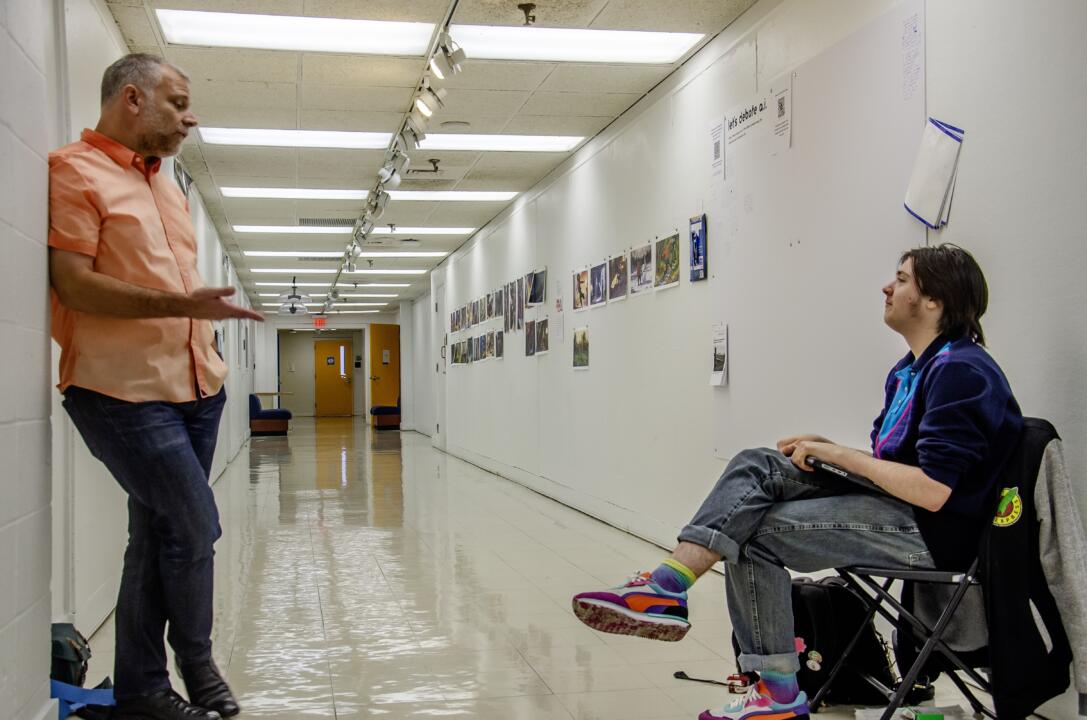The history of America is extremely diverse, including many different ethnic and racial groups since the country’s inception. However, many groups’ histories have faded from mainstream discussion. One of these histories is that of Chinese Americans argues Irene Chan, associate Professor of Visual Arts at UMBC and a 2018 Dresher Center Residential Faculty Fellow.
Chan is conducting research on the forgotten stories of Chinese Americans by collecting songs, poetry, diaries and other Chinese voices from all different parts of the country.
This research has been divided into two parts. The first is a website that Chan and her production team designed called the “Railroad Track of Violence,” where animation and visual arts meet to tell these unknown stories of violence and discrimination.
The second phase is what Chan is currently working on by compiling instances of Chinese voices, but her ultimate goal is to create a physical space where people can interactively hear and experience Chinese American stories. This blend of visual arts and history are what make Chan’s research unique and appealing in allowing people to actively participate in learning.
The actual stories that Chan found in her research have hard-to-swallow themes like slavery, brutality, apathy and hatred. Chinese Americans were called “yellow rats scurrying around” and were believed to eat “rats and puppies.” Nineteen Chinese people were lynched all at once in the Chinese Massacre of 1871, and 28 Chinese were killed in the Rock Springs Massacre with their bodies left mutilated and unburied.
In the face of this violence, many important Chinese fought back, like Wong Chin Foo, who was a major spokesperson for social justice and change that many Americans do not know about today. “I want people to know Wong Chin Foo just as much as they know Martin Luther King Jr.,” Chan articulated.
Throughout her education, Chan realized that she was never taught these histories of Chinese Americans who were an extremely vital part of the growing America in the nineteenth century. Nine out of ten men building the Central Pacific Railroad were Chinese and much of the country was built by this group. Yet, in schools today, Chan argues, students only learn that the Chinese were oppressed and did not fight back.
Chan wants to challenge this disregard for history with her research of art, political comics, poetry, song lyrics, newspaper articles and other valuable Chinese American voices of the time.
Chan also wants to give life to the suppressed voices of Chinese American women who were kidnapped and sold into sexual slavery in great numbers. Chan found poems and songs from some of these women which she plans to present in Cantonese and English in her exhibit.
However, the songs Chan found did not come accompanied with music; they were simply lyrics. She wondered what the music would look and sound like, given the terrible hardships and discrimination these men and women faced from the American government. Would the music itself be a story?
Shedding a newfound light on this forgotten history of this major ethnic group in America is the ultimate goal of Chan’s research. Using her visual arts skills, the final product of her research is sure to resound in many people’s hearts as they learn more about the diversity of American history.
For now, Chan’s first phase is up and running for people to check out at railroadtrackofviolence.com.

